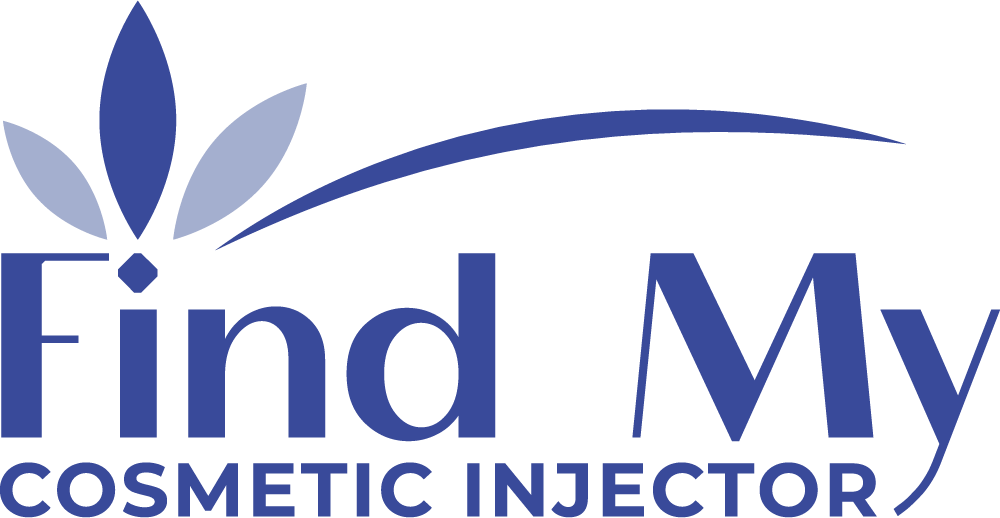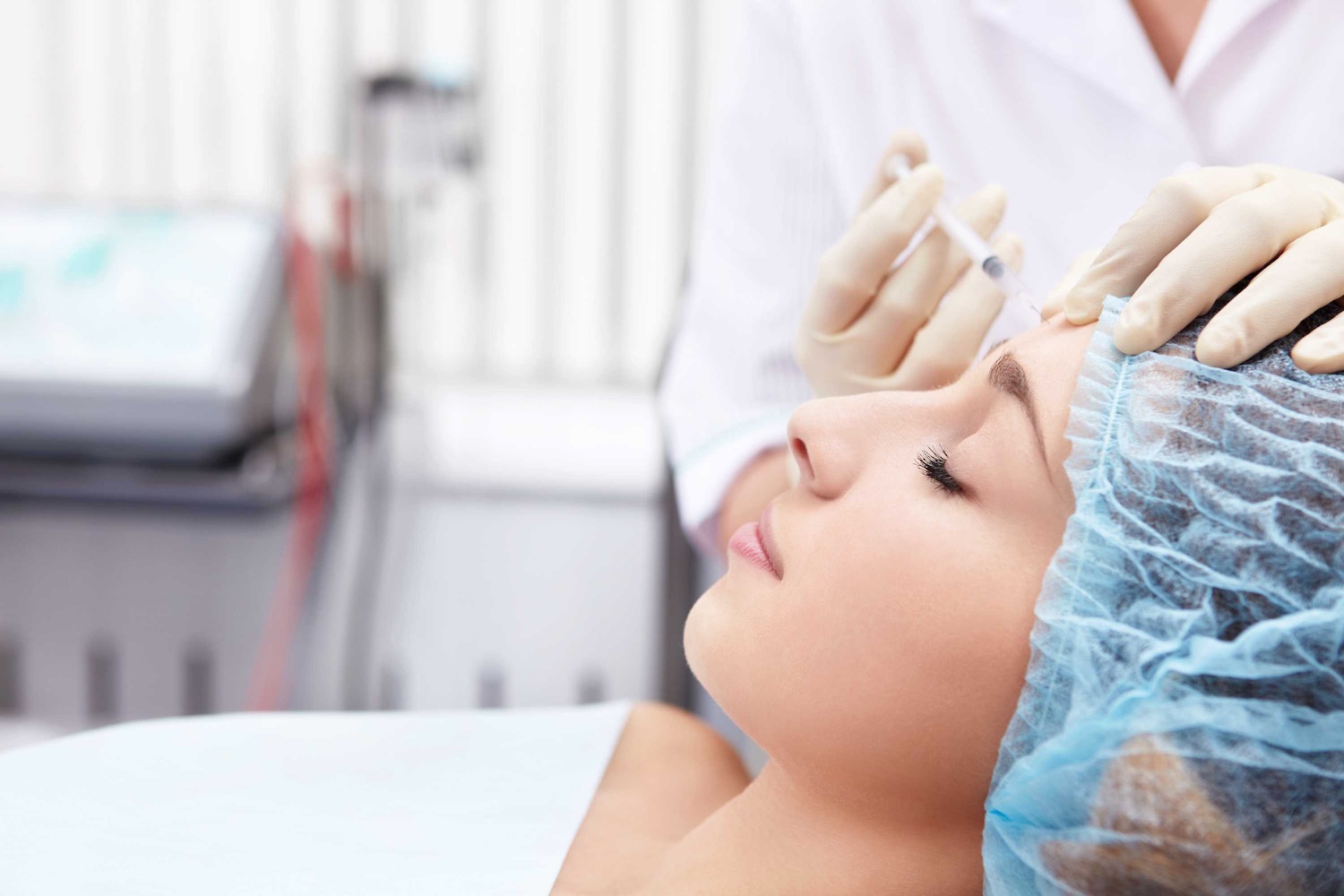
Does Botox Hurt?
Introduction
Botox is a popular cosmetic treatment that many people are curious about. But one common question is whether or not Botox hurts. In this article, we’ll explore the answer to that question and also take a look at some of the other potential side effects of Botox.
What is Botox and What Does it Do?
Botox is a neurotoxin that is used to reduce the appearance of wrinkles. It works by paralyzing the muscles that cause wrinkles.
Botox is most commonly used on the forehead, around the eyes, and on the neck. It can also be used to reduce sweating, migraines, and muscle spasms.
How is Botox Administered and Does it Hurt?
Botox is administered through injections. A licensed injector will inject the Botox into the areas where you have wrinkles. The injections may sting a little, but they usually aren’t too painful.
Is Botox Safe?
Yes, Botox is safe. It is a natural, purified protein that has been used for many years in medicine to help diminish the appearance of wrinkles.
How Much Does Botox Cost?
The amount of Botox needed, and the cost per treatment, varies depending on the areas being treated. Typically, Botox costs between $10 and $20 per unit. If you’re having a lot of wrinkles treated, it may cost more. For example, if you’re getting your forehead and crow’s feet done, each treatment may use 30 to 40 units and cost around $300.
Benefits of Botox Injections
Some of the various benefits of receiving Botox injections include:
-Botox is a quick, easy, and relatively painless procedure.
-Botox helps you look younger and more refreshed.
-Botox is FDA-approved and has a long history of safety.
-Botox can help you feel more confident about your appearance.
How Long Do Botox Results Last?
The results of a Botox injection usually last three to four months. The body slowly and naturally breaks down and eliminates the injected material. The results are not permanent, and touch-ups may be necessary to maintain the desired effect.
To learn more about the Botox procedure, what it entails, and how much it might cost you, contact your local medspa.
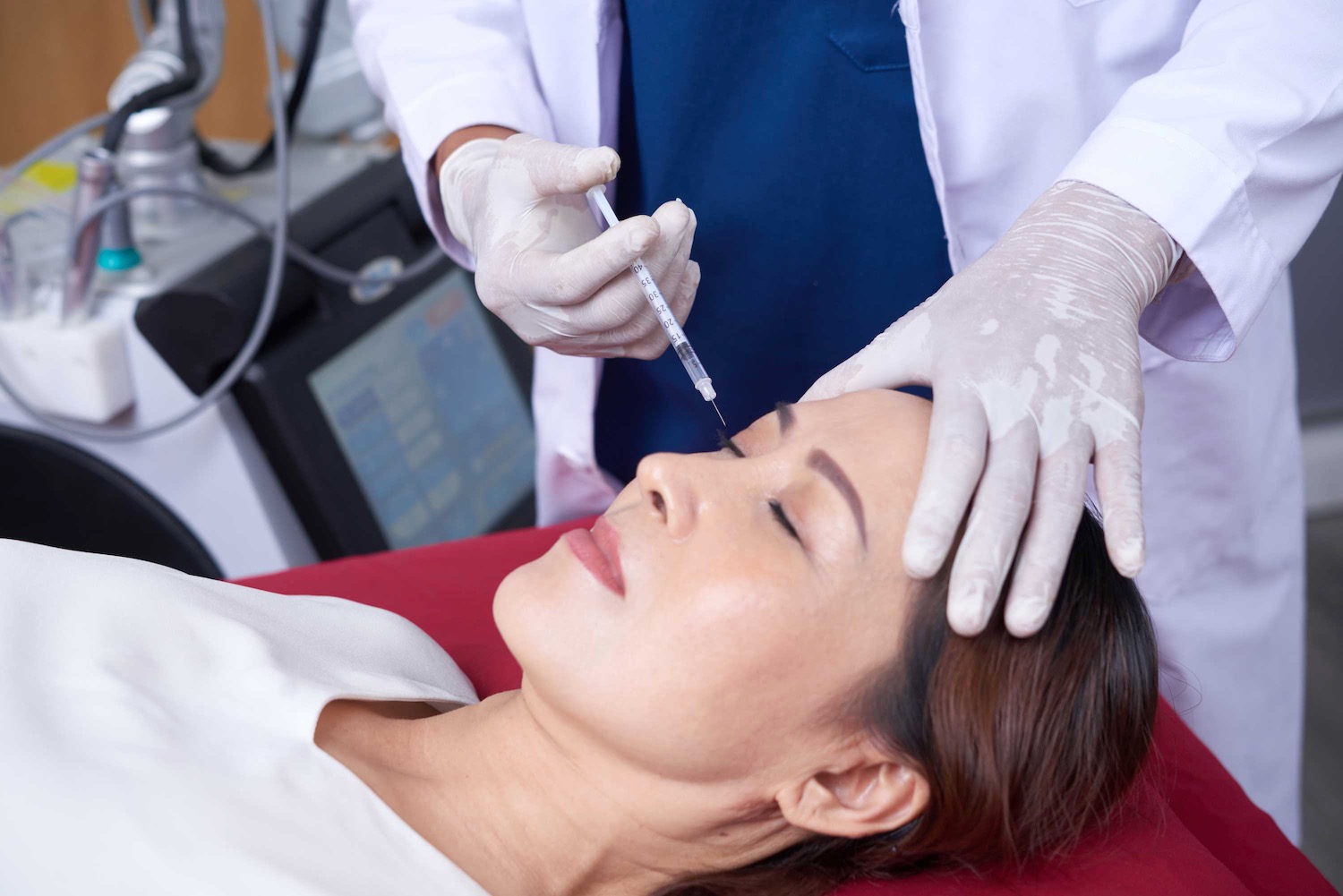
Botox Where to Inject?
Introduction
Botox, a neurotoxin produced by the bacterium clostridium botulinum, is best known for its ability to reduce or eliminate wrinkles by paralyzing the muscles that cause them. But did you know that Botox can also be used to treat a variety of medical conditions, including migraines, excessive sweating, and even crossed eyes? In fact, it’s estimated that more than six million Botox treatments are administered each year in the United States alone.
But where should you get your Botox injections? And who should administer them? Keep reading to learn more about Botox and find out where to go for the best treatment possible.
What is Botox and What Does it Do?
Botox is a neurotoxin that is used to relax the muscles. It is used to treat conditions such as hyperhidrosis, migraines, and chronic pain. Botox works by blocking the signals from the nerves to the muscles. This prevents the muscles from contracting.
Where to Inject Botox for the Best Results
When it comes to Botox, there are a few key areas you want to target for the best results. The first is the area between your eyebrows, also known as the glabellar region. This is where you’ll typically see the most pronounced lines and wrinkles.
Another area to focus on is the crow’s feet area around your eyes. Botox can help smooth out the skin and reduce the appearance of wrinkles. Finally, you may also want to consider injecting Botox into your neck to help reduce the appearance of neck lines and wrinkles.
How Much Botox Should Be Injected at Once?
A common question that is asked is how much Botox should be injected at one time. It is recommended to start with a lower dose and increase it gradually if needed. Most patients require between 10 and 20 units to achieve their desired results.
How Long Will the Results Last?
The results of a Botox injection usually last three to four months. However, the duration of its effects may vary depending on how much muscle activity you have and the strength of the toxin used.
How Much Does Botox Cost?
Botox injections can cost a few hundred dollars or more, depending on where you live and the type and amount of Botox you get. Consult your local Medspa to get a more precise estimate.

Botox Parties
Introduction
It’s no secret that the beauty industry is a multi-billion dollar business. Americans spend more on beauty products than they do on bread, milk, or cheese. In fact, we spend so much on beauty that it has even been called a “national obsession.” But what you may not know is that a good chunk of that money is being spent on Botox and other cosmetic procedures.
In this article, we’ll take a closer look at Botox parties–what they are, how they work, and why people are choosing to have them. Keep reading to learn more.
What are Botox Parties?
Botox parties are gatherings where people can get Botox treatments administered by a professional. Often, these parties are hosted by dermatologists or plastic surgeons, and they offer people the opportunity to get a Botox treatment at a discounted price. People who attend Botox parties often do so because they want to save money on their treatments, or because they want to have the experience of getting Botox administered in a group setting.
How Do Botox Parties Work?
At a Botox party, a registered cosmetic professional will come to your home and administer Botox injections to you and your guests. The professional will provide each person with a treatment plan that outlines how many units of Botox they should receive. Most people require between 10 and 20 units of Botox to achieve their desired results.
The esthetician will also provide each person with a post-treatment plan detailing how long they should wait before returning to normal activities. Most people can return to work the next day, but it is advised that patients avoid strenuous activity for a few days.
Who Can Attend?
Botox parties are open to anyone over the age of 18. However, if you are pregnant or breastfeeding, you should not receive Botox injections. Additionally, if you have any neurological disorders or are taking certain medications, you may not be a candidate for Botox. Be sure to consult with a medical professional prior to attending a Botox party to ensure that the treatments are right for you.
Risks Associated with Botox Parties
There are several risks associated with Botox parties:
1. Unqualified people may administer the injections, which can lead to serious health complications.
2. People may not receive the correct dosage of Botox, which can lead to adverse effects.
3. Botox parties may be hosted by disreputable individuals who are looking to make a quick profit.
4. There is no way to guarantee the quality or purity of the Botox that is being administered at a party. It may be counterfeit or of poor quality, which could lead to health complications.
5. The cost of Botox treatments administered at a party is likely to be higher than if they were administered by a qualified medical professional. This could lead to people being overcharged for treatments that may not be safe or effective.
Conclusion
Due to the aforementioned risks, it’s always better to receive Botox injections at your local medspa as opposed to at a Botox party. Before receiving any injections at all, be sure to consult an experienced cosmetic professional.
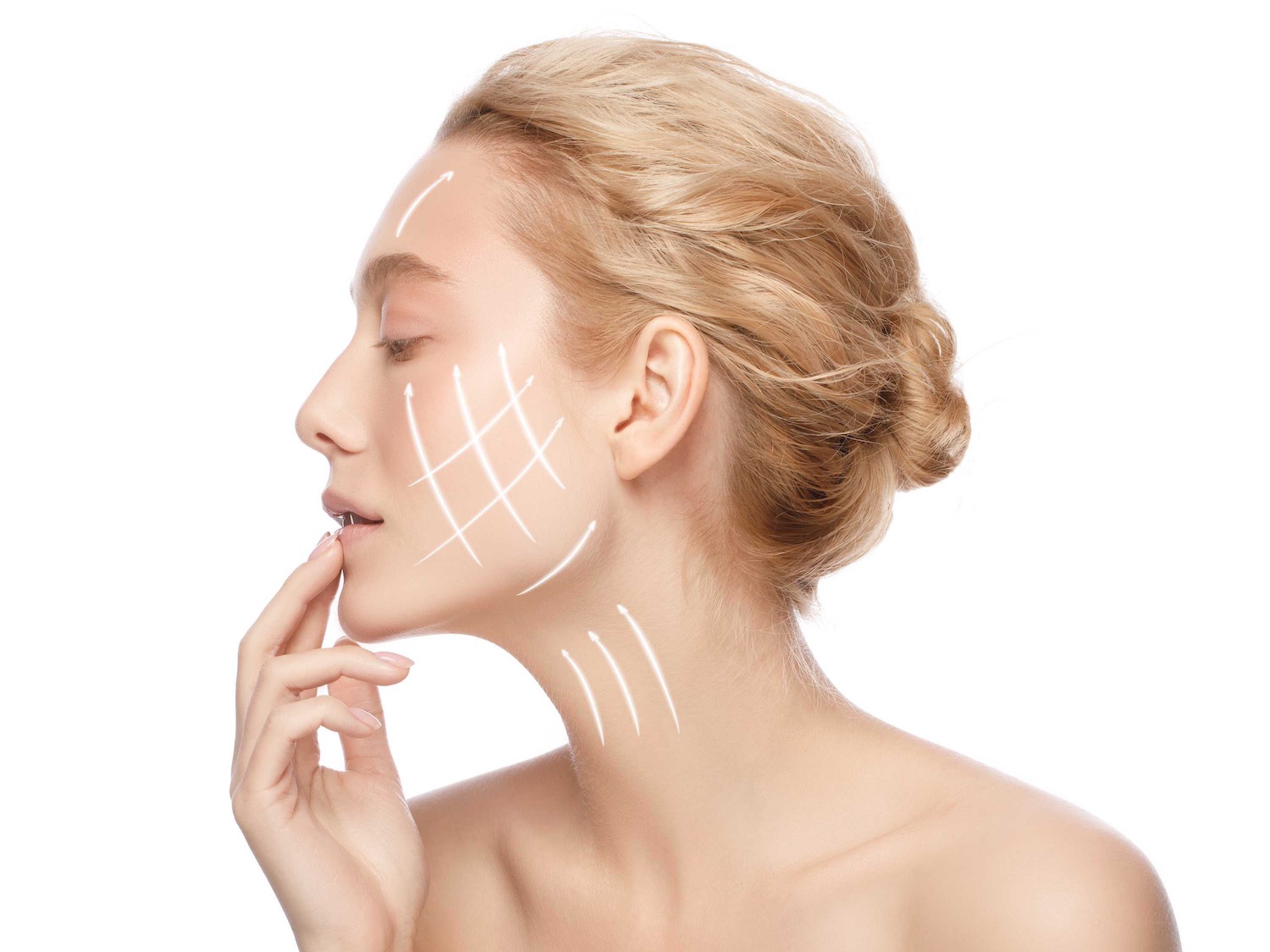
Botox for Neck Sagging
Introduction
As we age, our skin begins to sag and lose its youthful appearance. This is especially noticeable in the neck area, where skin can become loose and wrinkled. While there are a number of cosmetic procedures that can help improve the appearance of neck skin, Botox is one of the most popular. In this article, we will discuss how Botox can be used to treat neck sagging.
Keep reading to learn more.
What is Botox and What Does it Do?
Botox is a neurotoxin that is used to paralyze muscles. It is most commonly used to treat wrinkles, but can also be used to treat neck sagging. Botox works by temporarily paralyzing the muscles, which reduces the appearance of wrinkles.
How is Botox Used to Treat Neck Sagging?
Botox can be used to treat neck sagging in two ways:
1. By injecting Botox into the platysma muscle, which is the sheet of muscle that extends from the jaw to the collarbone. This will help to relax the muscle and diminish the appearance of neck sagging.
2. By injecting Botox into the sternocleidomastoid muscle, which is a large muscle that extends from the back of the ear to the collarbone. This will help to reduce the appearance of neck sagging by making the muscle appear smaller.
Risks of Botox for Neck Sagging
There are some risks associated with Botox for neck sagging. One of the most common risks is that the Botox may not distribute evenly, which can create an uneven appearance. Additionally, there is a risk of bruising or swelling after the injection. Finally, there is always a risk of infection with any cosmetic injection.
But as long as you seek treatment from a reputable provider, you won’t have to worry about experiencing any serious side effects.
How Much Does Botox for Neck Sagging Cost?
The cost of Botox for neck sagging varies depending on the provider, but it typically costs between $300 and $600 per session. Some providers may offer package deals that lower the per-session cost. Botox is considered an elective procedure, so it’s unlikely that your health insurance provider will cover your treatment. However, it can’t hurt to contact them if you’re considering getting Botox done.

Botox Toxicity
Introduction
Botox, a cosmetic injection that temporarily paralyzes muscles to reduce wrinkles, is increasingly being used for medical purposes such as treating migraines, overactive bladders, and crossed eyes. But a new study has found that, in some cases, the toxin can spread from the injected area to other parts of the body, potentially causing serious health problems.
Keep reading to learn more.
What is Botox and What Does it Do?
Botox is a neurotoxin derived from the bacterium clostridium botulinum. It is used medically to treat certain muscle conditions and cosmetically to remove wrinkles.
How Botox Works
Botox is a neurotoxin, which means that it is a toxin that specifically affects nerve cells. It is made from the bacteria clostridium botulinum. When Botox is injected into a muscle, it blocks the release of a chemical called acetylcholine. This chemical is responsible for telling the muscle to contract. By blocking the release of this chemical, Botox can cause the muscle to relax.
Botox Toxicity
While Botox is generally considered to be a safe treatment, there is always the potential for side effects and complications. When administered incorrectly, Botox can cause botulism, a serious and potentially deadly illness. Symptoms of botulism include muscle weakness, paralysis, and difficulty breathing. If you experience any of these symptoms after receiving a Botox injection, you should seek medical attention immediately.
There is also the potential for allergic reactions to Botox. Symptoms of an allergic reaction can include itching, redness, swelling, and difficulty breathing. This is why it’s important to consult an experienced Botox provider before undergoing the treatment.
Is Botox Safe?
Yes, Botox is considered safe by the FDA. It has been used for many years and has a good safety record. However, there are some risks associated with its use, so it’s important to talk to your injector before you decide to undergo Botox treatments.
How to Reduce the Risk of Toxicity When Using Botox
To reduce the risk of toxicity when using Botox, always use a reputable and experienced injector. Do not administer Botox yourself. Be sure to follow all aftercare instructions provided by your injector, including avoiding alcohol and strenuous activity for 24 hours post-injection.
Finally, if you experience any adverse effects after receiving a Botox injection, seek medical attention immediately.
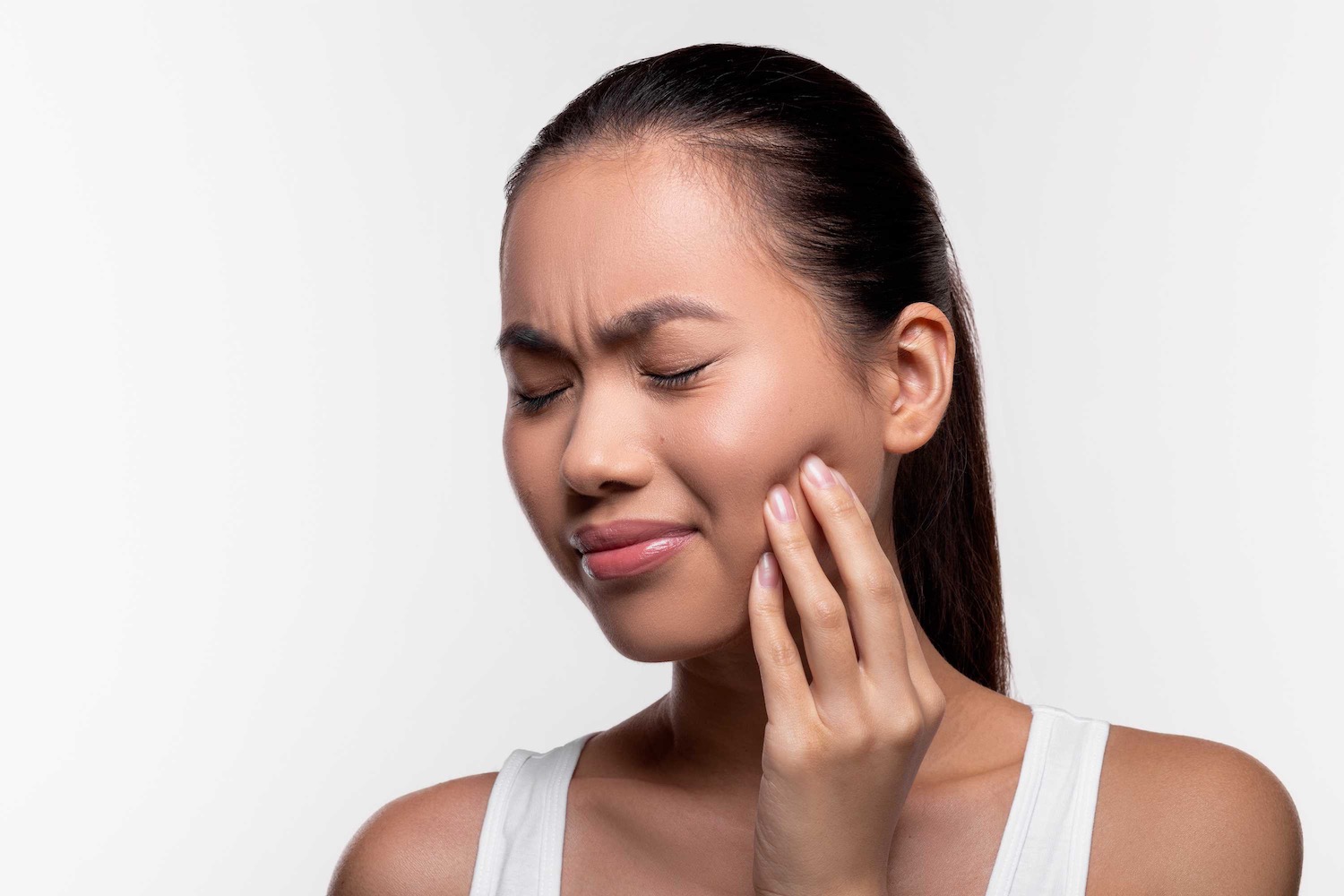
Botox for TMJ
Introduction
There’s a new treatment that has steadily been gaining popularity of late–Botox for TMJ. But what is it, and is it right for you? In this article, we’ll take a closer look at Botox for TMJ and its benefits and drawbacks.
Keep reading to learn more.
What is TMJ and What are its Symptoms?
The temporomandibular joint (TMJ) is the hinge that connects the lower jaw (mandible) to the skull. It allows for movement of the jaw, such as opening and closing the mouth. The TMJ can be affected by problems such as arthritis, injury, or stress. Symptoms of TMJ problems can include pain in the jaw, neck, or ear, a clicking or popping sound when moving the jaw, and difficulty opening or closing the mouth.
What Causes TMJ?
TMJ is caused by a variety of factors, including genetics, injury, and arthritis.Jaw clenching and teeth grinding (bruxism) are also common causes of TMJ.
How Botox is Used to Treat TMJ
Botox is often used to treat TMJ because it can help to reduce muscle spasms in the jaw. By relaxing the muscles, Botox can help to reduce pain and discomfort associated with TMJ. Botox injections are usually given every three to four months, and the results typically last for several months.
Botox is not a cure for TMJ, but it can help to provide relief from the symptoms. If you are considering Botox for TMJ, be sure to consult with your doctor to see if it is right for you.
Good Candidates for Botox for TMJ
A good candidate for Botox for TMJ is someone who experiences regular pain in their jaw, has difficulty opening their mouth wide, or experiences frequent headaches. Botox can help to reduce pain and inflammation in the jaw, and it can also help to prevent headaches. If you have any of these symptoms, you may be a good candidate for Botox for TMJ.
Who Shouldn’t Get Botox for TMJ?
Botox should not be used by people who have a history of allergies to any of the ingredients in Botox. It should also not be used by people who are pregnant or breastfeeding.
How Much Does Botox for TMJ Cost?
Botox injections for TMJ can cost anywhere from $300 to $1,000 per treatment session. The number of sessions you may need will depend on the severity of your symptoms. Generally, Botox injections are most effective when used in combination with other treatments, such as splints, physical therapy, and/or medications.

Botox for Grinding Teeth
Introduction
Grinding teeth, or bruxism, is a common problem that can cause headaches, toothaches, and jaw pain. It can also lead to more serious problems like TMJ disorder. In some cases, grinding teeth may even be severe enough to damage the teeth.
So, can Botox help with teeth grinding? Keep reading to learn more.
What is Botox and What Does it Do?
Botox is a neurotoxin that is used to treat various medical conditions, including chronic migraines, excessive sweating, and eyelid spasms. It works by blocking the release of a chemical called acetylcholine, which sends signals to the muscles. This prevents the muscles from contracting, which reduces the appearance of wrinkles and other signs of aging.
How Can Botox Help with Teeth Grinding?
Teeth grinding, or bruxism, is a common problem that can lead to a variety of dental issues. Fortunately, there are effective treatments available. Botox is one option that can help to reduce teeth grinding and protect your teeth from further damage.
Botox is a minimally invasive treatment that is injected into the muscles in the face. It works by temporarily paralyzing the muscles, which can help to reduce teeth grinding. In addition, Botox can help to relax the jaw and reduce stress, which may also contribute to teeth grinding.
Risks of Getting Botox for Teeth Grinding
The potential risks of Botox for teeth grinding include:
* Infection – If the Botox is not administered correctly, there is a risk of infection.
* Muscle weakness – Botox can cause muscle weakness, which may affect your ability to chew and speak.
* Jaw pain – Botox injections can cause pain in the jaw muscles.
* Numbness – There is a risk that the injected area will become numb.
* Allergic reaction – Some people may be allergic to the Botox injections.
If you are considering getting Botox for teeth grinding, it is important to speak to your dentist or doctor about the potential risks and side effects of doing so.
How Much Does Botox for Teeth Grinding Cost?
Grinding teeth, or bruxism, can cause a lot of dental problems. Not only can it wear down your teeth and damage your gums, but it can also lead to tension headaches and neck pain. If you’re experiencing any of these issues, your dentist may recommend Botox as a treatment.
The cost of Botox for teeth grinding will vary depending on the dentist and the severity of the grinding. However, most treatments will cost between $150 and $350. Insurance may cover some of the cost of your treatment if it’s considered medically necessary.

Botox for Jowls
Introduction
Botox, a neurotoxin produced by the bacterium clostridium botulinum, is best known for its cosmetic applications, which include smoothing wrinkles and reducing facial sagging. But new research suggests that it may also have therapeutic potential for treating jowls—a condition characterized by excess skin and fat around the jawline.
Keep reading to learn more.
What are Jowls and What Causes Them to Form?
Jowls are the excess skin that hangs below the jawline. Jowls form when the muscles below the jawline weaken and allow the skin to sag.
How Botox Can Help
Botox can help to reduce the appearance of jowls by relaxing the muscles in that area. This will help to smooth out the contours of the neck and jawline, giving a more youthful appearance.
Benefits of Botox
Some of the various benefits of Botox treatment include:
– Botox relaxes the muscles that cause jowls, leading to a more youthful look.
– Botox is a non-invasive treatment, so you can get great results without surgery.
– Botox is safe and effective, with few side effects.
What Makes a Good Candidate for Botox Treatment for the Jowls?
The best candidates for Botox treatment for the jowls are those who have mild to moderate signs of aging, such as a loss of definition in the jawline and sagging skin. Botox can help improve these symptoms by temporarily relaxing the muscles in the face, which can diminish the appearance of the jowls.
If you are considering Botox treatment for the jowls, it is important to consult a medical professional who has experience performing this procedure. During your consultation, they can assess your overall health and facial anatomy to ensure that you are a good candidate for the procedure.
Who Should Not Get Botox for the Jowls?
There are a few people who should not get Botox for the jowls. These people include those who are pregnant or breastfeeding, have a neuromuscular disorder, or are allergic to any of the ingredients in Botox. Additionally, those who have recently had surgery or are taking certain medications should not get Botox injections.
To determine whether you’re a good candidate for Botox, contact your local medspa.
Conclusion
If you’re considering Botox for your jowls, be sure to consult with a qualified doctor or esthetician. They can help you determine if Botox is right for you and answer any questions you may have.
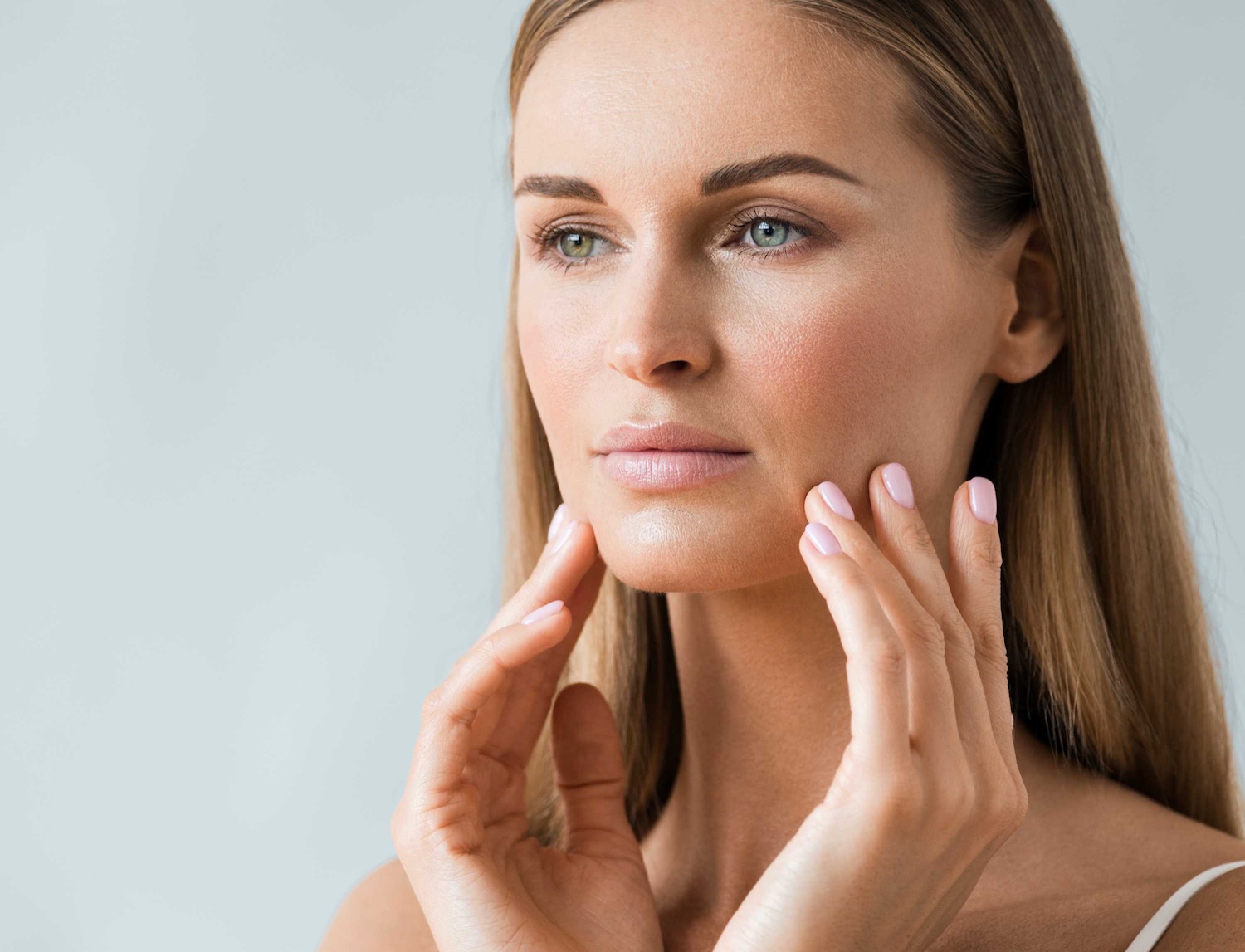
Botox Long-Term Effects
Introduction
Botox is a popular cosmetic treatment that many people use to improve their appearance. However, there are some potential long-term effects of Botox that you should be aware of before you decide to undergo the procedure. In this article, we will discuss the possible long-term side effects of Botox and what you can do to minimize your risk of experiencing them.
Keep reading to learn more.
What is Botox and What are its Long-Term Effects
Botox is a neurotoxin that is injected into the skin to paralyze muscles. It is most commonly used to treat wrinkles, but can also be used to treat other conditions such as excessive sweating and migraines. The long-term effects of Botox are not fully known, but it is thought that repeated injections may cause the skin to thin and the muscles to weaken.
There is also a risk of botulism if the toxin is injected into a blood vessel. This is why Botox should only be injected by a trained medical professional.
How Does Botox Work and How Long Does it Last?
Botox is a neurotoxin that blocks nerve signals to the muscles. This causes the muscles to relax and results in a temporary smoothing of the skin. The effects of Botox usually last 3-4 months, but they may last longer in some people.
Who Should Get Botox and Who Should Avoid It?
Generally, Botox is safe for most people. However, there are a few exceptions. Pregnant or breastfeeding women should avoid Botox, as well as people who are allergic to lidocaine or who have a neuromuscular disorder. People with a history of mental illness should also avoid Botox, as the treatment can worsen certain mental conditions.
If you have any concerns about whether or not Botox is right for you, be sure to speak with a healthcare professional.
How Much Does Botox Cost and Where Can You Get It?
Botox is the most common type of cosmetic surgery, with more than 6 million procedures done each year. The cost of Botox varies depending on where you live and the provider you visit, but it typically ranges from $300 to $1,000 per treatment.
Research medical spas in your area to figure out where you might be able to receive Botox injections for an affordable price, and don’t forget to consult a medical professional before receiving them.
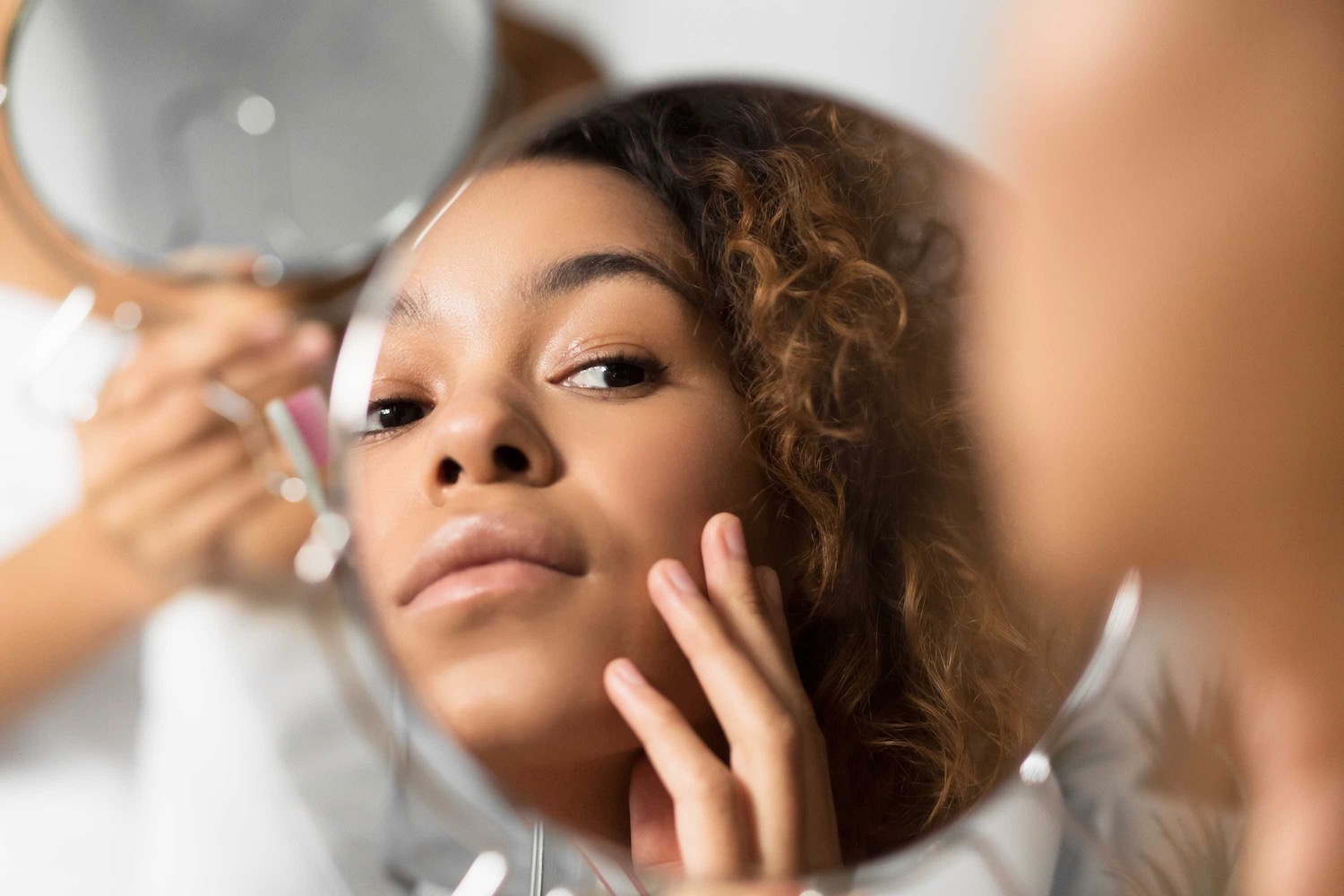
Botox to Slim Face
Introduction
If you’re looking for a way to slim your face without surgery, Botox may be the answer. According to a new study, Botox can help reduce the amount of fat in your face by up to 20 percent.
The study was conducted by researchers at the University of British Columbia and involved injecting Botox into the faces of 24 participants. The results were then compared to those of a control group who did not receive Botox injections.
The study found that not only did Botox help reduce the amount of fat in participants’ faces, it also improved their overall appearance. Keep reading to learn more about Botox for facial slimming.
What is Botox and What Does it Do?
Botox is a neurotoxin that is used to treat various medical conditions, including migraines, excessive sweating, and crossed eyes. It is also used to improve the appearance of the skin by reducing the appearance of wrinkles.
Botox works by temporarily paralyzing the muscles that it is injected into. This paralysis prevents the muscles from contracting, which in turn reduces the appearance of wrinkles.
The results of Botox injections typically last for 3-6 months, after which the recipient’s muscle function will gradually return to normal.
How Botox Can Slim Your Face
Botox can help slim down your face by temporarily paralyzing your facial muscles. This will help to reduce the appearance of puffiness and sagging. It can also help to smooth out fine lines and wrinkles, giving you a more youthful appearance.
Risks of Receiving Botox for the Face
The risks associated with Botox injections for slimming your face are mainly mild bruising and swelling. You may also experience some pain at the injection site. As long as you receive this treatment from an experienced provider, you won’t have to worry about compromising your safety or experiencing serious side effects.
Botox Face Slimming Cost
The cost of Botox injections for slimming your face can vary depending on the provider. Typically, the cost will be around $300-600 per session. However, it is important to note that the results of Botox for slimming your face are not permanent and will need to be repeated every few months to maintain your results.

Botox to Lift Eyelids
Introduction
As we age, our skin begins to sag and droop, especially around the eyes. This is due in part to the natural loss of collagen that occurs with time, as well as to muscle atrophy. The eyelids are particularly prone to these effects, which can make them take on a tired or aged appearance.
Many people choose to undergo surgery to correct this problem, but there is another option: Botox.
Keep reading to learn more.
What is Botox and What Does it Do?
Botox is a popular non-surgical cosmetic procedure that can be used to lift drooping eyelids. It works by temporarily paralyzing the muscles that cause the eyelids to sag. This provides a temporary lifting effect that can last for several months.
Benefits of Using Botox to Lift Eyelids
Some of the various benefits of using Botox to lift the eyelids include:
– You will look younger and more refreshed.
– Botox is a temporary treatment, so you can choose to have it done again or stop whenever you want.
– You will feel more confident about your appearance.
– You will look like you’ve had a mini-face lift without the surgery.
Risks of Using Botox to Lift the Eyelids
The risks associated with using Botox to lift eyelids are mainly related to the injection process itself. There is a risk of bruising and swelling, and there is also a risk of infection. There is also a small risk of serious side effects, such as drooping eyelids or difficulty breathing.
Fortunately, the side effects of Botox are almost always temporary and mild, especially if you undergo your treatment with an experienced provider.
What Makes a Good Candidate?
Botox is a popular choice for people who are looking to improve the appearance of their eyelids. It can help to lift and tighten the skin, making the eyes look younger and more alert. A good candidate for Botox for the eyelids is someone who is unhappy with the appearance of their eyes and is looking for a way to improve it. Botox is also a good option for people who have drooping eyelids that are causing them to look older than they actually are.
Who Shouldn’t Get Botox for the Eyelids?
There are some people who should not get Botox for their eyelids. This includes people who have:
– Glaucoma
– Blepharitis
– Episcleritis
– Thyroid Eye Disease
– Dry Eyes
– Allergies to Botox or any of its ingredients
If you have any of these conditions, please consult your doctor before getting Botox for the eyelids.
Conclusion
If you’re considering Botox for your eyelids, it’s important to consult with a board-certified provider first. They will be able to determine if you’re a good candidate for the treatment and recommend the best course of action for you.

Botox – How Long to Work?
Introduction
Botox is a popular cosmetic treatment that many people use to improve the appearance of their skin. But how long does it take for Botox to work? And what can you do to make sure that it works as effectively as possible? In this article, we will explore these questions and offer some tips on how to get the most out of your Botox treatment.
Keep reading to learn more.
What is Botox and What Does it Do?
Botox is a neurotoxin that is injected into the skin in order to paralyze the muscles that cause wrinkles. It can be used to address wrinkles and fine lines on the face and neck, as well as certain medical conditions like chronic migraines.
How Long Does Botox Take to Work?
Botox generally takes about two weeks to start working. However, some people may see results as early as one week after treatment. The full effects of Botox usually kick in by week four.
The results of Botox typically last for four to six months. However, some people report that the effects can last up to a year or longer.
Side Effects of Botox
The side effects of Botox can include:
– Headaches
– Neck pain
– Muscular weakness
– Dry mouth
– Difficulty swallowing
– Nausea
– Joint pain
– Muscle pain
– Fatigue
Fortunately, this treatment’s side effects are almost always temporary and mild.
Where Can You Get Botox Injections?
Botox injections are a cosmetic treatment that can be performed by a dermatologist, plastic surgeon, or other medical professional. You can find a provider by searching online or through recommendations from friends. Once you’ve found a provider, schedule a consultation to discuss your goals for the injections.
Botox is most commonly injected into the forehead, around the eyes, and in the upper face. It can also be injected into the jawline and neck to treat wrinkles and sagging skin in these areas. Your injection site(s) will be determined by your specific goals for the treatment.
Benefits of Botox
One of the main benefits of Botox is that it is a relatively non-invasive procedure. There is no need for anesthesia or incisions. The injection itself only takes a few minutes, and there is usually no downtime afterwards. Recovery from a Botox treatment is usually very quick and easy.
Botox is also considered to be safe for most people. There are very few side effects associated with the treatment. The most common side effects are temporary and mild, and they usually subside on their own within a few days.
If you are considering getting Botox, it is important to consult with an experienced provider first. They will be able to assess your individual case and determine if Botox is right for you.
